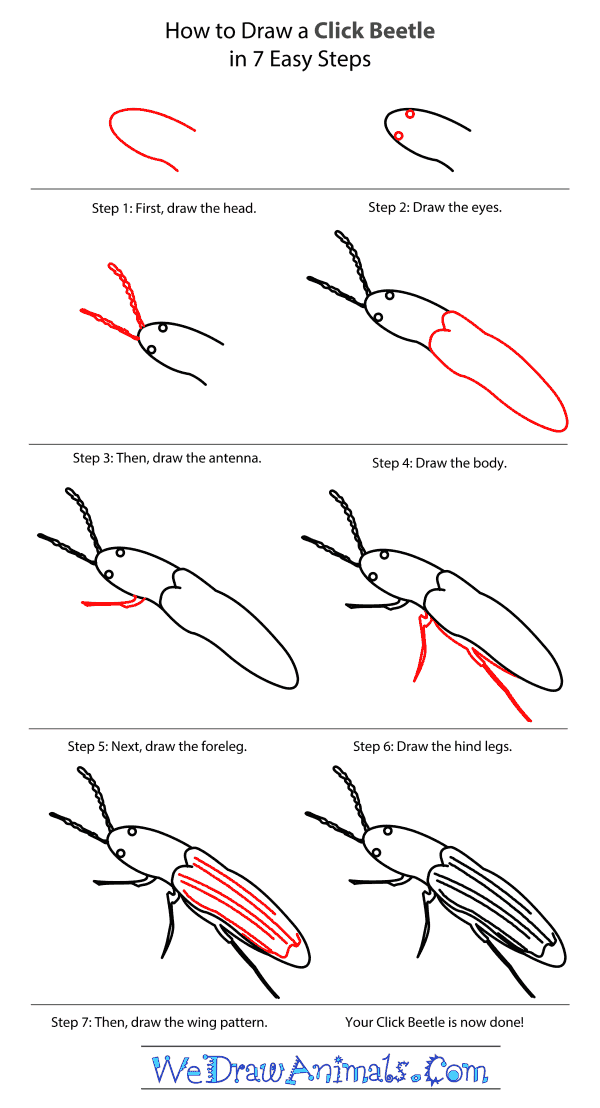In this quick tutorial you'll learn how to draw a Click Beetle in 7 easy steps - great for kids and novice artists.
The images above represent how your finished drawing is going to look and the steps involved.
Below are the individual steps - you can click on each one for a High Resolution printable PDF version.
At the bottom you can read some interesting facts about the Click Beetle.
Make sure you also check out any of the hundreds of drawing tutorials grouped by category.
How to Draw a Click Beetle - Step-by-Step Tutorial
Step 1: First draw the head. It is a crooked "U".
Step 2: Near the bottom of the "U" or the tip of the head draw two small round eyes on the inside of the two head lines.
Step 3: Starting at the very tip of the head draw two antennae. They are both very long and thin and made up of tiny circles or segments. They are both at different angles.
Step 4: There is an "M" shaped line joining the two back lines of the head. Continue the two "M" lines down into the body. The body is the same width as the head but twice as long.
Step 5: The end of the tail comes to a wide point.
Step 6: Staying on the left side draw two more legs. Right at the midline between the head and the body add the middle leg. It is wide at the top and very long and pointy at the tip. It points to the side. The hind leg begins right beside the middle leg and extends the length of the body. It is also long and points down.
Step 7: Draw several long straight lines along the length of the body. This is the wing pattern.
Interesting Facts about the Click beetle (Ampedus brunnicornis):
The Click Beetle is a small but elongated beetle averaging 2 centimeters long, although some are over an inch long. The Click Beetle gets its name from being able to make a loud clicking sound by pushing together two parts of its thorax and then snapping them quickly apart. (The thorax is the part of an insect between its head and its abdomen, and is the part of the insect that the legs come out of.) The loud clicking sound scares away predators, and can also be used to help the Click Beetle turn right side up if it has fallen onto its back and can’t otherwise get up.
Did you know?
- Some Click Beetles have two large “eye spots” on their back that are meant to startle predators.
- Click Beetles belong in the order Coleoptera, which contains all beetle species.
- Elateridae is the family name for typical Click Beetles.
- Other names for Click Beetles include “skipjacks”, “spring beetles” and “snapping beetles.”
- Click Beetles are a genus with over three hundred species worldwide.
Ampedus brunnicornis is a particular species of Click Beetle found only in Central Europe (Italy, France, Germany, Austria, Czech Republic, and Slovakia). It needs veteran trees in order to survive, and its habitat is disappearing quickly. Because of this, the IUCN lists the Ampedus brunnicornisspecies of Click Beetle as “Vulnerable,” which is just one step away from Endangered.








